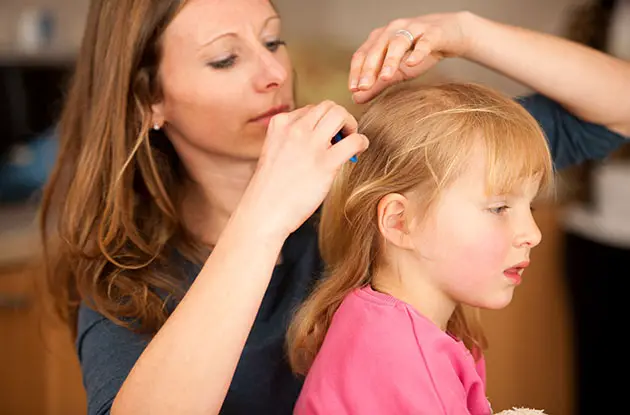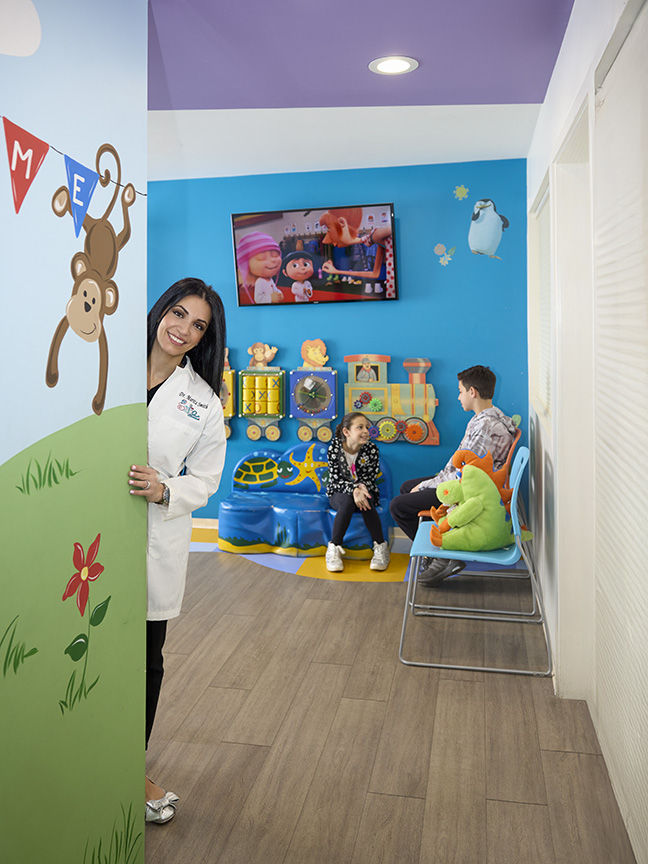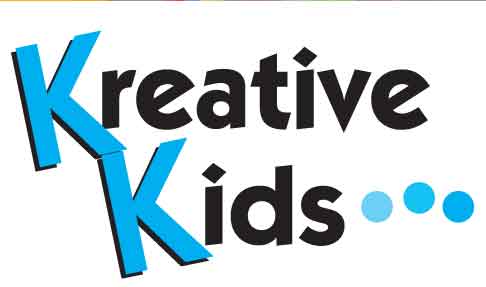Like most parents, I am overjoyed when winter is over. This winter my house was a revolving door of germs with flu, strep, and pneumonia running rampant and causing my kids to miss way too many school days. When the warm weather approaches, I look forward to fewer trips to the pediatrician and hope my kids will have a fun-filled and illness-free summer. Yet there are some common childhood ailments that are actually more prevalent during the summer months. I spoke with area health experts to learn about the most common health problems for kids during the summer and what you can do to prevent them, or failing that, treat them effectively.
Coxsackie Virus
Dubbed the “summer flu,” Coxsackie virus is an enterovirus that lives in the gastrointestinal tract and can be spread through swimming pools. It is most common in young children and is highly contagious. Symptoms can include fever, sore throat, crankiness, and a rash that occurs on the hands, feet, and mouth. The virus is spread through nose and mouth secretions or from contact with the feces of an infected child, so thorough hand washing after diaper changes is key. All shared toys or objects should be cleaned since the virus can live on surfaces.
Jay Berger, M.D., a Long Island pediatrician and the associate chairman of pediatrics of ProHEALTH Care, has seen his fair share of summertime Coxsackie cases. The virus often “masquerades as strep,” he says. “Unfortunately Coxsackie usually gets worse before it gets better,” Dr. Berger adds. “The patient might have higher temperatures or more blisters may appear before they start to feel better.”
Sometimes young children with Coxsackie avoid solid food because it is too painful to eat, so it’s essential to ensure your child remains well hydrated with cold drinks. Avoid acidic or tangy foods, which can aggravate mouth sores. Dr. Berger prefers Motrin for Coxsackie because it is anti-inflammatory, helping with pain and discomfort. He also suggests parents make a concoction of equal parts Maalox and Benadryl for their older children who can swish it around in their mouths and then spit it out. “This can really help heal the lesions in the mouth and alleviate discomfort,” Dr. Berger says.
The rash and blisters can remain visible for several days, so parents often are confused about when the virus is no longer contagious. A good rule of thumb is when your child is fever free and has no visibly oozing blisters, she can return to camp or other summer activities.
RELATED: Find Medical Providers Near You
Heat Exhaustion & Heat Rash
Searing temperatures during the dog days of summer can take a toll on young children who play outdoors for hours. Children are more prone than adults to heat exhaustion because a child’s body surface area makes up a much greater proportion of his overall weight than an adult’s. “Babies are also more likely to get heat exhaustion because they can’t self-regulate like older children. They are depending on adults to give them drinks or remove them from a sunny spot,” Dr. Berger says.
Heat exhaustion occurs when children become dehydrated. Early signs can include lack of energy, fatigue, thirst, and dry lips and/or tongue. We’ve all heard that children should drink regularly before they get thirsty to avoid dehydration, but kids don’t really get thirsty until they’ve lost 2 percent of their body weight as sweat—so be sure to be giving them water regularly.
If you suspect your child is suffering from heat exhaustion, get her into the shade or air conditioning. Make sure he is drinking water and eating salty pretzels or bananas to help replenish electrolytes.
Heat rash looks like tiny red dots or pimples on the skin. It tends to happen in hot, humid weather, and babies are most likely to get it. “Heat rash is actually a blockage of sweat glands,” Dr. Berger says. It can cause itching and discomfort in children. Most cases of heat rash go away after three or four days. Try to keep your child’s skin cool and dry and avoid overdressing her. Hydrocortisone cream can help alleviate the symptoms. If the heat rash is accompanied by a fever, contact your doctor.
Lice
Ask any lice removal specialist about his busiest week in business, and chances are he will say it is the week when kids return from sleepaway camp. In fact, many parents make a beeline to lice removal specialists for screening before their kids even step foot in their house.

“I think that camps are a breeding ground for head lice and I think the reason is the close proximity of kids to each other, less supervision, sharing of towels, brushes, etc.,” says Anna Krosche, founder and owner of The Lice Lady of Westchester. “It really only takes one kid to have lice and then before you know it the whole bunk has it.”
Children should be reminded not to share brushes, towels, or hair ties. Girls should keep their hair up and in a braid or tight bun to minimize exposure. Krosche suggests daily use of a lice-repellant spray with lemongrass, peppermint, lavender, or rosemary oils, which are lice-resistant.
Krosche also recommends using an enzyme shampoo, which works well because the bugs themselves are made out of enzymes, so they can’t develop a resistance to it. “Some lice have actually become resistant to OTC [over-the-counter] shampoos such as Rid or Nix,” she says.
When Krosche and her team treat a client, they will use a conditioner and combing solution, and she suggests combing the hair out in all four directions with a special nit-picking comb. “Nits are only on one side of an individual’s hair, so that’s why it’s important to comb it in all four directions.” Krosche and her team then blow dry the hair and do another lice check. “Parents should follow up with a comb-out each day for a week and then come back for a re-check after seven days. It is important to do daily comb-outs because if the lice lay eggs, it takes about three days for it to grow big enough to be removed with a comb-out,” she says.
RELATED: Find Lice Services Near You
Plantar Warts & Athlete’s Foot
Most kids love running barefoot in the summer, but this carefree attitude puts them at higher risk for plantar warts and athlete’s foot. “A wart is a virus, and a viral particle is tiny. The body is generally well-equipped to prevent warts, but the second there’s an opening through small cuts is when you can have trouble,” says Ari Rubinstein, M.D., a podiatrist at Lower Westchester Foot and Ankle. Dr. Rubinstein sees a large influx of kids with plantar warts during the summer.
Warts are treated through several methods, including strong acid medicines, freezing (cyrotherapy), or laser treatments. Most cases can be treated with an excision and applying salicylic acid. “Several treatments might be needed though to fully eliminate the warts,” Dr. Rubinstein says.
Athlete’s foot is a fungal skin infection that causes itching, redness, and burning between the toes. The infection thrives in moist, warm environments such as communal locker rooms and public showers. “Although there are several OTC products for it, a prescription product might be more effective and help speed up the healing process with a difficult case,” Dr. Rubinstein says. It’s also great to remind kids that flip-flops are their friends and can help prevent warts and athlete’s foot.
Sunburn
Parents need to be vigilant with sunscreen application and look for a broad-spectrum sunscreen with SPF 30 or higher that offers both UVA and UVB protection, advises Julie Karen, M.D., a board-certified dermatologist in Manhattan and an assistant clinical professor at NYU Langone Medical Center. UVA and UVB refer to two kinds of harmful rays, ultraviolet A and ultraviolet B. “Both types of rays contribute to skin cancer, but a broad-spectrum sunscreen has to protect proportionately against both UVA and UVB rays,” she says. In fact, if a child has five or more sunburns in his lifetime, the risk for melanoma is doubled.
With so many sunscreen options available, it can be difficult for parents to choose one. Dr. Karen prefers sunscreens with zinc oxide or titanium dioxide because, she says, “the benefits are manifold. They are not just physical blockers but they are also better tolerated for children with sensitive skin.” If your child is going to the pool or beach, opt for a water-resistant formula that is less susceptible to degradation from water exposure.
Other helpful tips are to apply the sunscreen 20 minutes prior to sun exposure and then reapply every two hours, or sooner if your child is excessively perspiring or swimming. Keep the sunscreen in a temperate environment and check the expiration date on the bottle. “No one uses nearly enough sunscreen,” Dr. Karen says. “Always use more than you think you could possibly need and spend time rubbing it in.”
She recommends complete sun avoidance for infants 6 months and younger. Children younger than 1 have particularly sensitive skin and should avoid the sun during peak hours (10am–4pm). Besides seeking shade and limiting sun exposure, children should also wear a broad-brimmed hat and clothing such as rash guards with ultraviolet protection factor.
“Parents need to understand that sunscreens aren’t perfect,” Dr. Karen says. “They are not intended for you to wear and stay all day out in the sun. They are meant for the necessary exposure to the sun that comes with living a healthy, active lifestyle.”
If your child still gets sunburned, a cool bath can help lower the skin’s temperature and then a gentle moisturizer should be applied to hydrate the skin. If your child has a high fever with the sunburn or your infant gets sunburned, call your pediatrician.
Swimmer’s Ear
Children are susceptible to swimmer’s ear because their small ear canals can easily trap moisture. “Moisture is a key ingredient for swimmer’s ear, so parents need to keep their children’s ears dry after swimming,” says Joey Bernstein, M.D., chief of the division of pediatric otolaryngology at New York Eye and Ear Infirmary of Mount Sinai in Manhattan. Chlorinated pools are actually less of a risk factor for swimmer’s ear than swimming in lakes or rivers where bacteria counts are higher.
Dabbing your ears with a towel is a good first step in keeping your child’s ears dry. Blow dryers on a low setting about a foot away from the ear can also help keep moisture out. “If simple things like this don’t work, some kids may need to wear ear plugs, but that’s rarely necessary,” Dr. Bernstein says.
If you suspect your child has swimmer’s ear, it is important to treat it early, before the infection escalates and the pain becomes severe. Minor discomfort and itching are early signs of an infection. At-home treatments can help acidify the ear canal—meaning, make it a more acidic environment—which helps prevent bacteria from growing, while also helping dry the ear as much as possible. A 1-to-1 solution of white vinegar, an acidifier, and rubbing alcohol, a drying solution, can help. If this doesn’t work, pay a visit to your doctor, who can prescribe antibiotic eardrops.
RELATED: Get Our Weekend Planner Sent to You





.jpg)



